Wouter Scheffer dissects the effectiveness of desiccant antimicrobial coatings in air conditioning systems
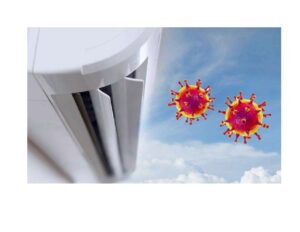 Poor ventilation in closed indoor environments is associated with increased transmission of respiratory infections. There have been numerous SARS-CoV-2 transmission events associated with closed spaces, including some from pre-symptomatic cases. The role of ventilation in preventing SARS-CoV-2 transmission is not well-defined – that is, by preventing dispersal of infectious particles in small waterdrops to minimise the risk of transmission or preventing transfer of an infectious dose to susceptible individuals.
Poor ventilation in closed indoor environments is associated with increased transmission of respiratory infections. There have been numerous SARS-CoV-2 transmission events associated with closed spaces, including some from pre-symptomatic cases. The role of ventilation in preventing SARS-CoV-2 transmission is not well-defined – that is, by preventing dispersal of infectious particles in small waterdrops to minimise the risk of transmission or preventing transfer of an infectious dose to susceptible individuals.
SARS-CoV-2 is thought to be primarily transmitted through large respiratory droplets; however, an increasing number of outbreak reports implicate the role of aerosols in SARS-CoV-2 outbreaks. Aerosols consist of small droplets and droplet nuclei, which remain in the air for longer than large droplets. Studies indicate that SARS-CoV-2 particles can remain infectious on various materials, such as air conditioning surfaces in air ducts and air handlers, as well as in aerosols in indoor environments, with the duration of infectivity depending on temperature and humidity.
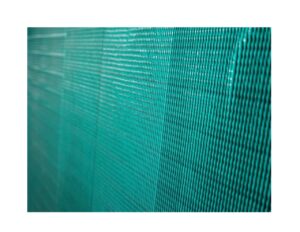 While HVAC coatings are often the most cost-efficient insurance for the longevity of your air-handling system, there’s much more to them than just increasing your building systems’ lifespan. The rising demand for antimicrobial coatings was triggered by the COVID-19 pandemic and tenants worried about their wellbeing from airborne diseases. In the same category, antimicrobial coatings can make a huge difference for indoor air quality and occupant safety. There are a number of HVAC coatings that drive energy savings, primarily desiccant-coatings.
While HVAC coatings are often the most cost-efficient insurance for the longevity of your air-handling system, there’s much more to them than just increasing your building systems’ lifespan. The rising demand for antimicrobial coatings was triggered by the COVID-19 pandemic and tenants worried about their wellbeing from airborne diseases. In the same category, antimicrobial coatings can make a huge difference for indoor air quality and occupant safety. There are a number of HVAC coatings that drive energy savings, primarily desiccant-coatings.
Found on AHU heat exchangers, coils and in duct systems, they enable recovering heat and moisture, which then helps building owners to save on operational cost. Recent studies have uncovered an extreme antimicrobial effect of desiccant coating systems, in high relative humidity, as present in air conditioning systems. It appears the surfactants can break the exterior protein of a virus or bacteria strain. Once the protein is destroyed, the virus cannot attach to cells and transfer or alter human ribonucleic acid (RNA).
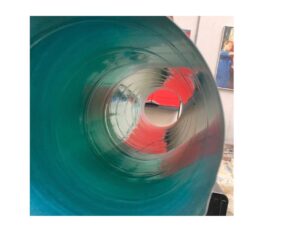 In many circumstances, once microbes have begun to proliferate on a painted surface, constant cleaning and disinfecting is required to keep growth under control, which is highly unwanted inside an air conditioning system. Recognising that the ability to clean constantly is unreasonable in most air conditioning systems, the best weapon against corrosion and microbial growth is an antimicrobial paint that prevents growth of, or eliminates, bacteria and viruses. Both the coating and the possible active ingredient should not produce any environmental, safety or health issues during application. Any off-gas from the film is unwanted, because ideally, the coating must be applied to air conditioning systems in operation without any concern of release of poisonous additives.
In many circumstances, once microbes have begun to proliferate on a painted surface, constant cleaning and disinfecting is required to keep growth under control, which is highly unwanted inside an air conditioning system. Recognising that the ability to clean constantly is unreasonable in most air conditioning systems, the best weapon against corrosion and microbial growth is an antimicrobial paint that prevents growth of, or eliminates, bacteria and viruses. Both the coating and the possible active ingredient should not produce any environmental, safety or health issues during application. Any off-gas from the film is unwanted, because ideally, the coating must be applied to air conditioning systems in operation without any concern of release of poisonous additives.
Antimicrobial efficacy based on silver ions
Generally, an antimicrobial surface contains an additive, like Agion, which inhibits the antimicrobial property that is composed primarily of silver ions, which have been proven in antimicrobial use throughout history. It incorporates silver ions inside a zeolite carrier, providing an area for these ions to exchange with other positively charged ions – often sodium – from the moisture in the environment.
Once exchanged, these now “free” silver ions are attracted to oppositely charged hydrogen ions, commonly found in most bacteria and microbes. The bacteria and microbes’ respiration and growth are now abruptly halted, since the hydrogen ions are no longer available. Silver based antimicrobial coatings contain a pesticide additive that evaporates slowly from the coating surface and raises questions on the durability of discharge. In Europe and North America, these coatings require a registration by the government authorities.
Antimicrobial efficacy based on desiccation
Enveloped viruses, like the H1N1 influenza virus, Corona (COVID-19) and bacteria have membranes of protein and enzymes to protect the infecting contents. The spreading of the viruses and bacteria in closed spaces and air conditioning systems is carried out by smaller aerosols. Alternative antimicrobial functionality is based on desiccation, a physical process to extract the moisture from the virus and bacteria particles. This approach may seem relatively primitive; however, it is extremely effective in slowing down or even preventing microbes from spreading and transmission. This method is similar to other physical treatments, such as UV irradiation, filtering and heating.
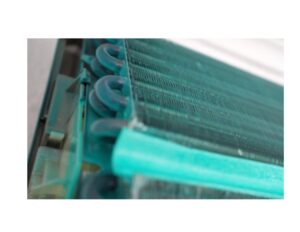 Desiccant coatings inactivate a wide variety of microbes that adhere to the surface through their hydrophilic surface properties. The antiviral functionality of the coating has been tested on the Phi6 virus, which is commonly used as surrogate for enveloped Corona viruses.
Desiccant coatings inactivate a wide variety of microbes that adhere to the surface through their hydrophilic surface properties. The antiviral functionality of the coating has been tested on the Phi6 virus, which is commonly used as surrogate for enveloped Corona viruses.
Studies
A recent study shows that a desiccant coating can have an extremely quick kill-rate of enveloped viruses after just 30 minutes.
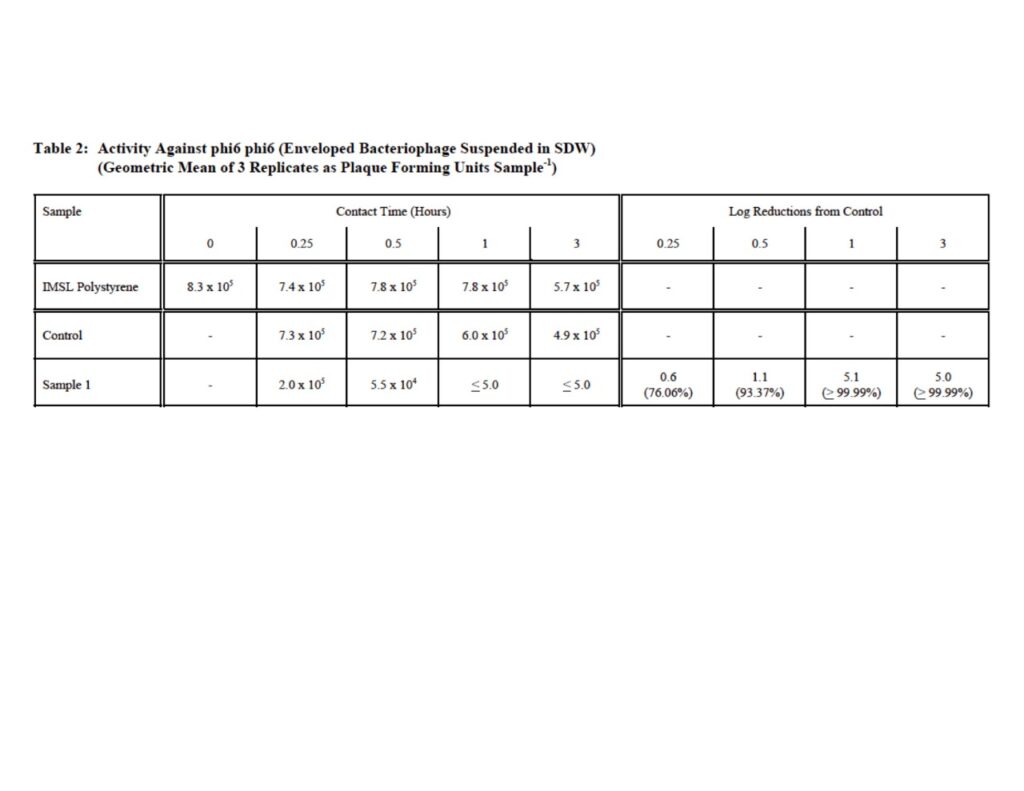 Further studies have proven that strong antimicrobial working was additionally confirmed. Surface activity results in full kill-rates of > 99,99%, which were confirmed on the following micro-organism strains:
Further studies have proven that strong antimicrobial working was additionally confirmed. Surface activity results in full kill-rates of > 99,99%, which were confirmed on the following micro-organism strains:
An important note should be added to this paper: No claim or assertion should be made that the antimicrobial properties in the coating will improve air quality or eliminate the threat of disease-causing microbes in the air supply system. A healthy indoor air system is highly dependent on a combination of design, maintenance and cleaning measurements that are incorporated in the air conditioning system and facility management procedures.
8 Evaluation of Phi6 Persistence and Suitability as an Enveloped Virus Surrogate Aquino de Carvalho, Nathalia; Stachler, Elyse N.; Cimabue, Nicole; Bibby, Kyle Environmental Science & Technology (2017), 51 (15), 8692-8700CODEN: ESTHAG; ISSN:0013-936X. (American Chemical Society)
Recent outbreaks involving enveloped viruses, such as Ebola virus and SARS COVID-2, have raised questions regarding the persistence of enveloped viruses in the water environment. Efforts have been made to find enveloped virus surrogates due to
challenges investigating viruses that require biosafety-level 3 or 4 handling. In this study, the enveloped bacteriophage Phi6 was evaluated as a surrogate for enveloped waterborne viruses. The persistence of Phi6 was tested in aq. conditions chosen based on previously published viral persistence studies. Our results demonstrated that the predicted T90 (time for 90% inactivation) of Phi6 under the 12 evaluated conditions varied from 24 minutes to 117 days depending on temperature, biological activity, and aq. media compn. Phi6 persistence was then compared with persistence values from other enveloped viruses reported in the literature. The apparent suitability of Phi6 as an enveloped virus surrogate was dependent on the temperature and compn. of the media tested. Of evaluated viruses, 33%, including all conditions considered, had T90 values greater than the 95% confidence interval for Phi6. Ultimately, these results highlight the variability of enveloped virus persistence in the environment and the value of working with the virus of interest for environmental persistence studies.
Adcock, Noreen J.; Rice, Eugene W.; Sivaganesan, Mano; Brown, Justin D.; Stallknecht, David E.; Swayne, David E.
Journal of Environmental Science and Health, Part A: Toxic/Hazardous Substances & Environmental Engineering (2009), 44 (13), 1362-1366CODEN: JATEF9; ISSN:1093-4529. (Taylor & Francis, Inc.)
Two bacteriophages, .vphi.6 and .vphi.8, were investigated as potential surrogates for H5N1 highly pathogenic avian influenza virus in persistence and chlorine inactivation studies in water. In the persistence studies, .vphi.6 and .vphi.8 remained infectious at least as long as the H5N1 viruses at both 17 and 28 degrees C in fresh water, but results varied in salinated water. The bacteriophage .vphi.6 also exhibited a slightly higher chlorine resistance than that of the H5N1 viruses. Based upon these findings, the bacteriophages may have potential for use as surrogates in persistence and inactivation studies in fresh water.
The writer is with Aqua Aero Coatings and may be contacted at wouter@aquaaero.net
Copyright © 2006-2025 - CPI Industry. All rights reserved.